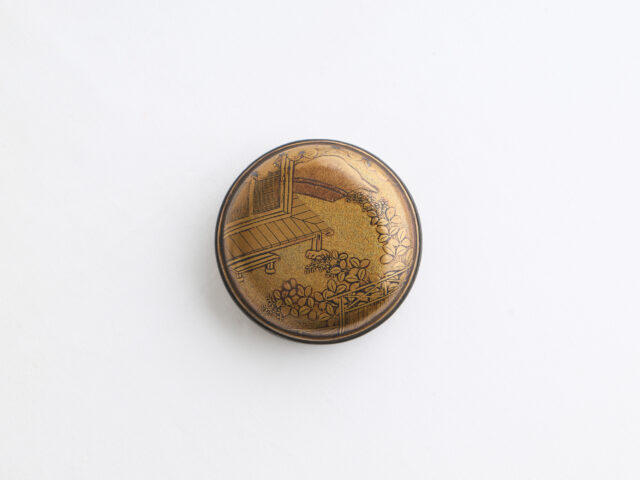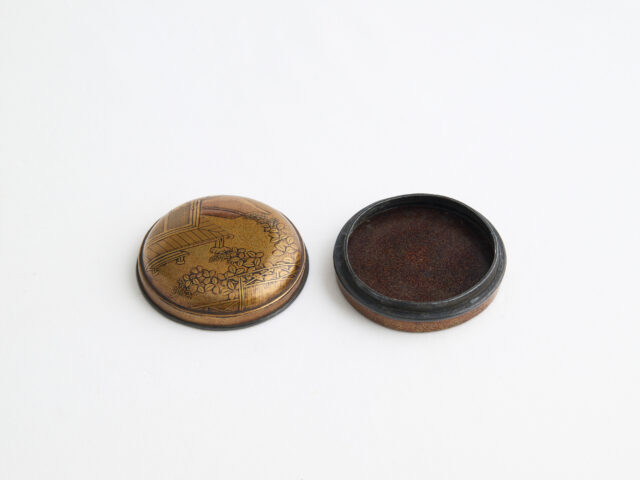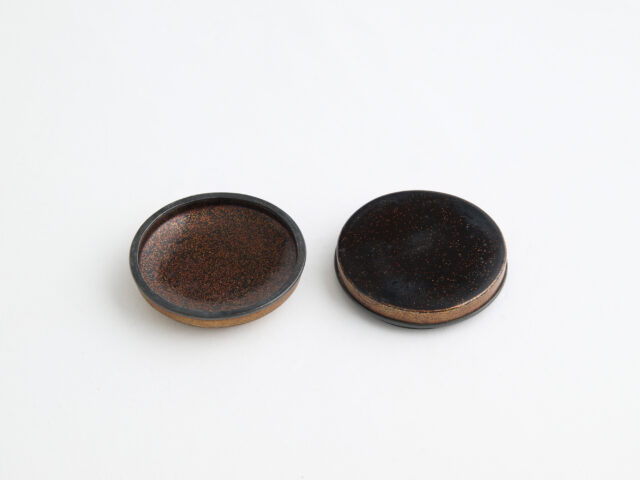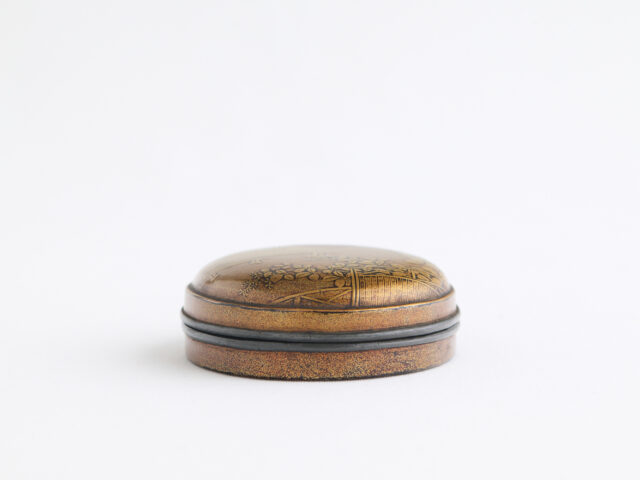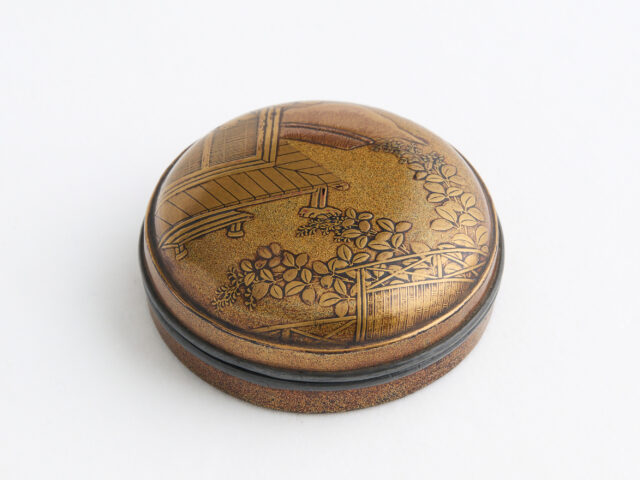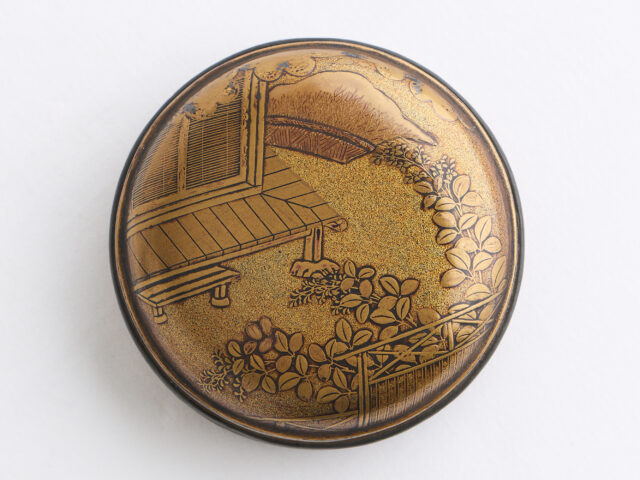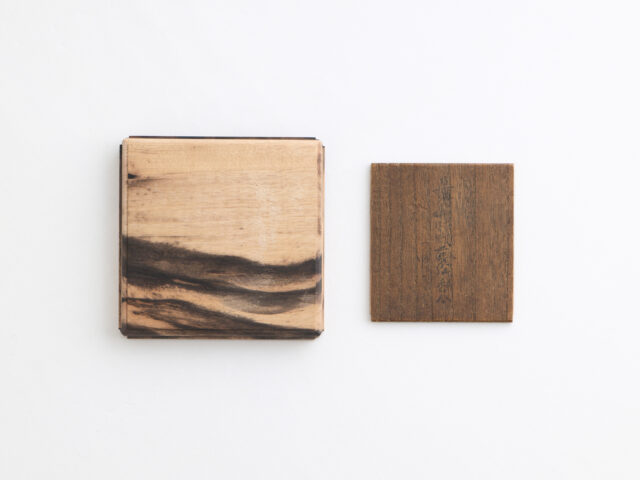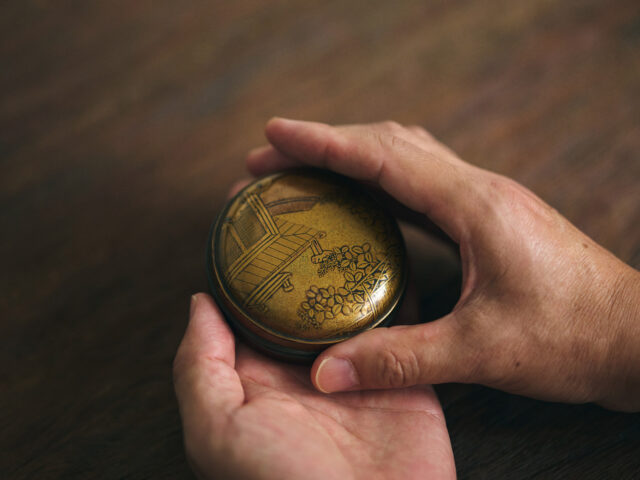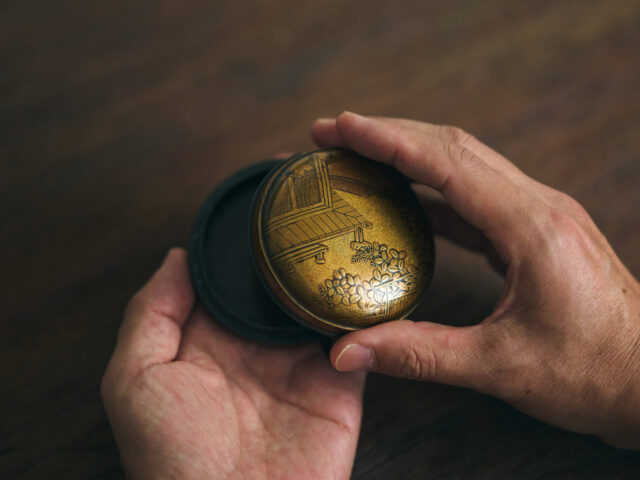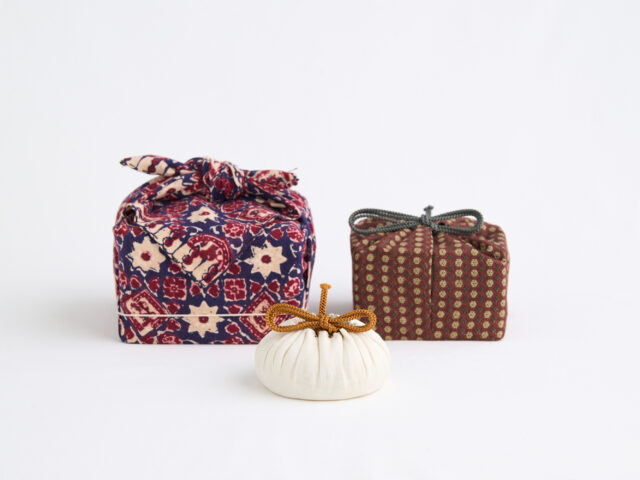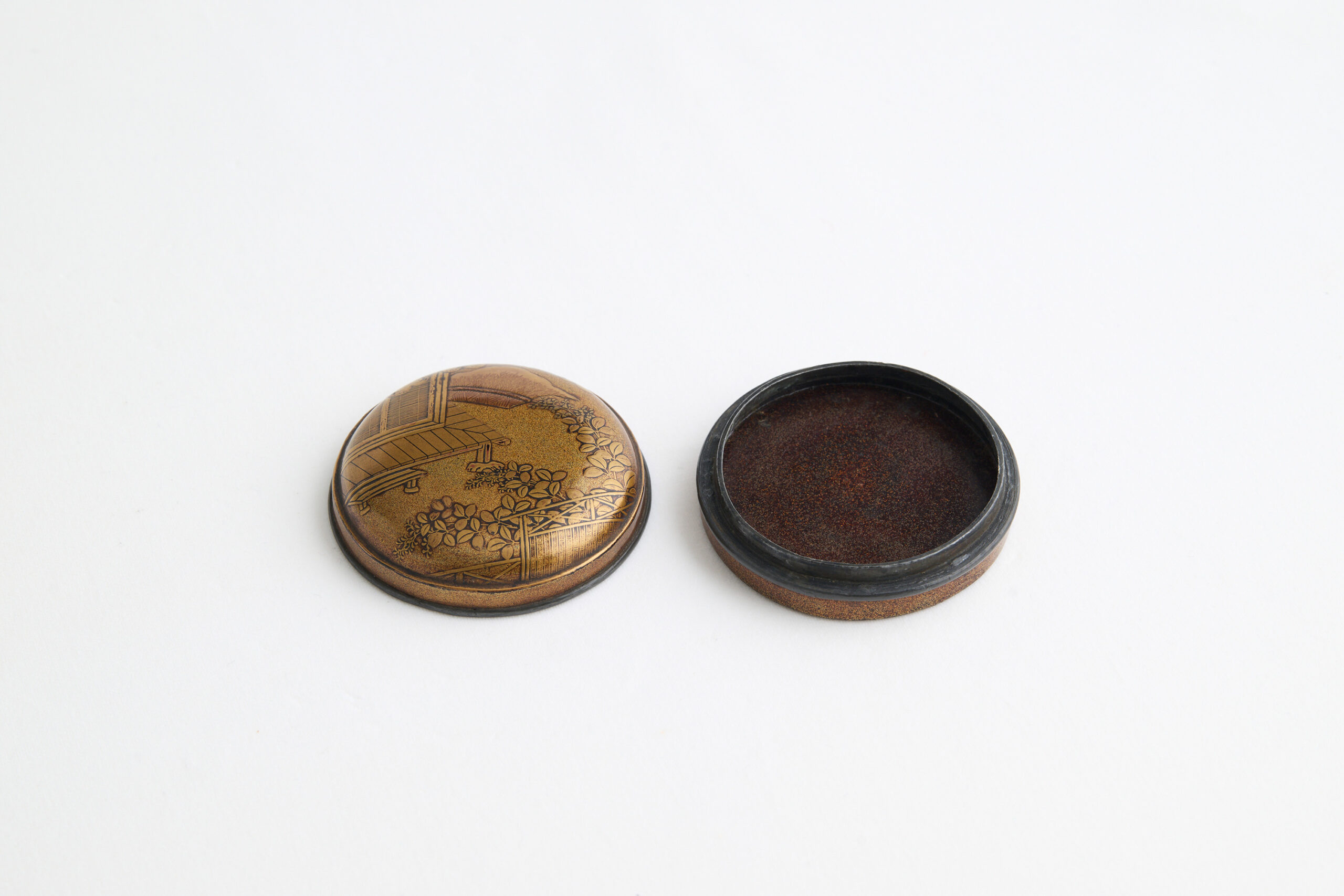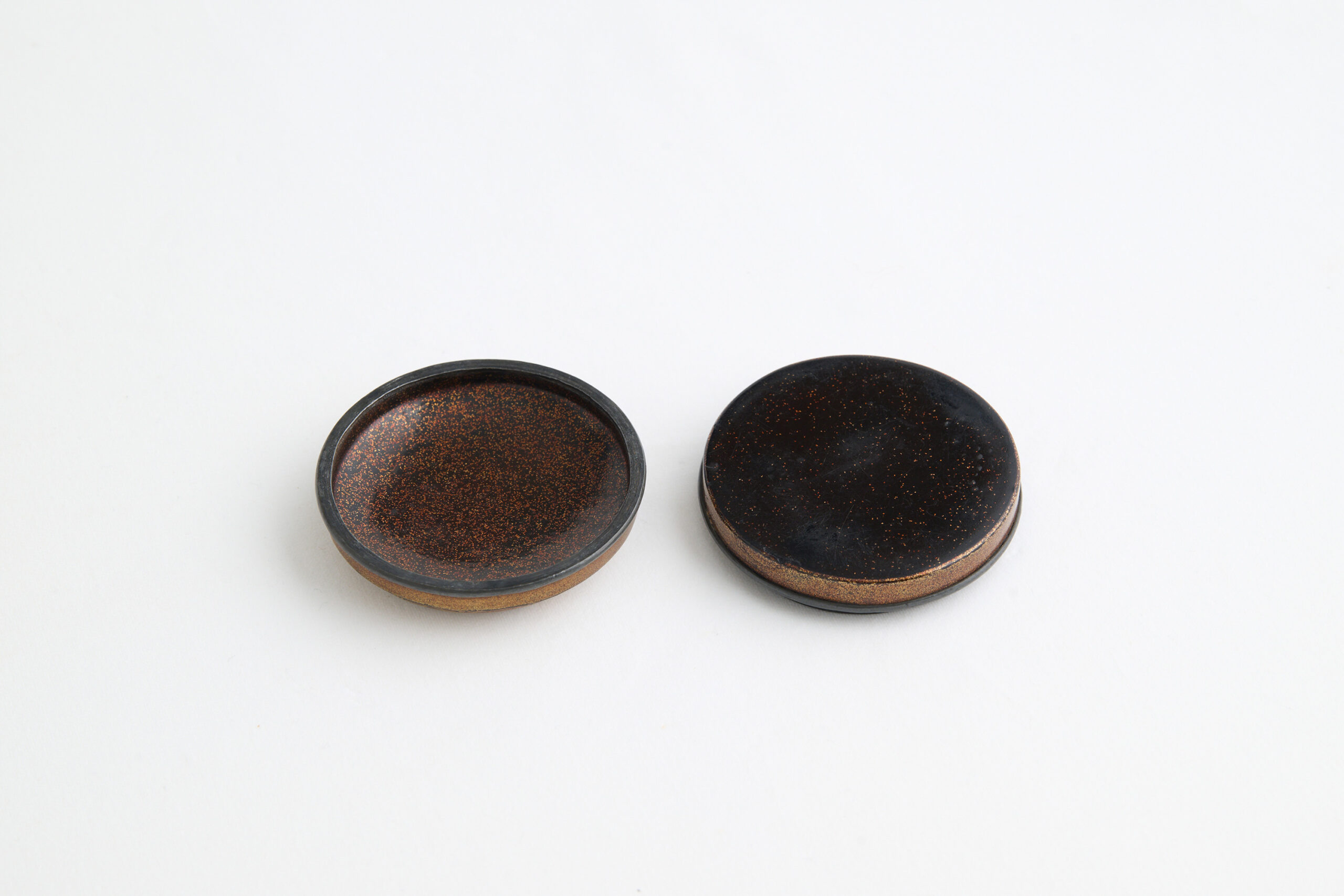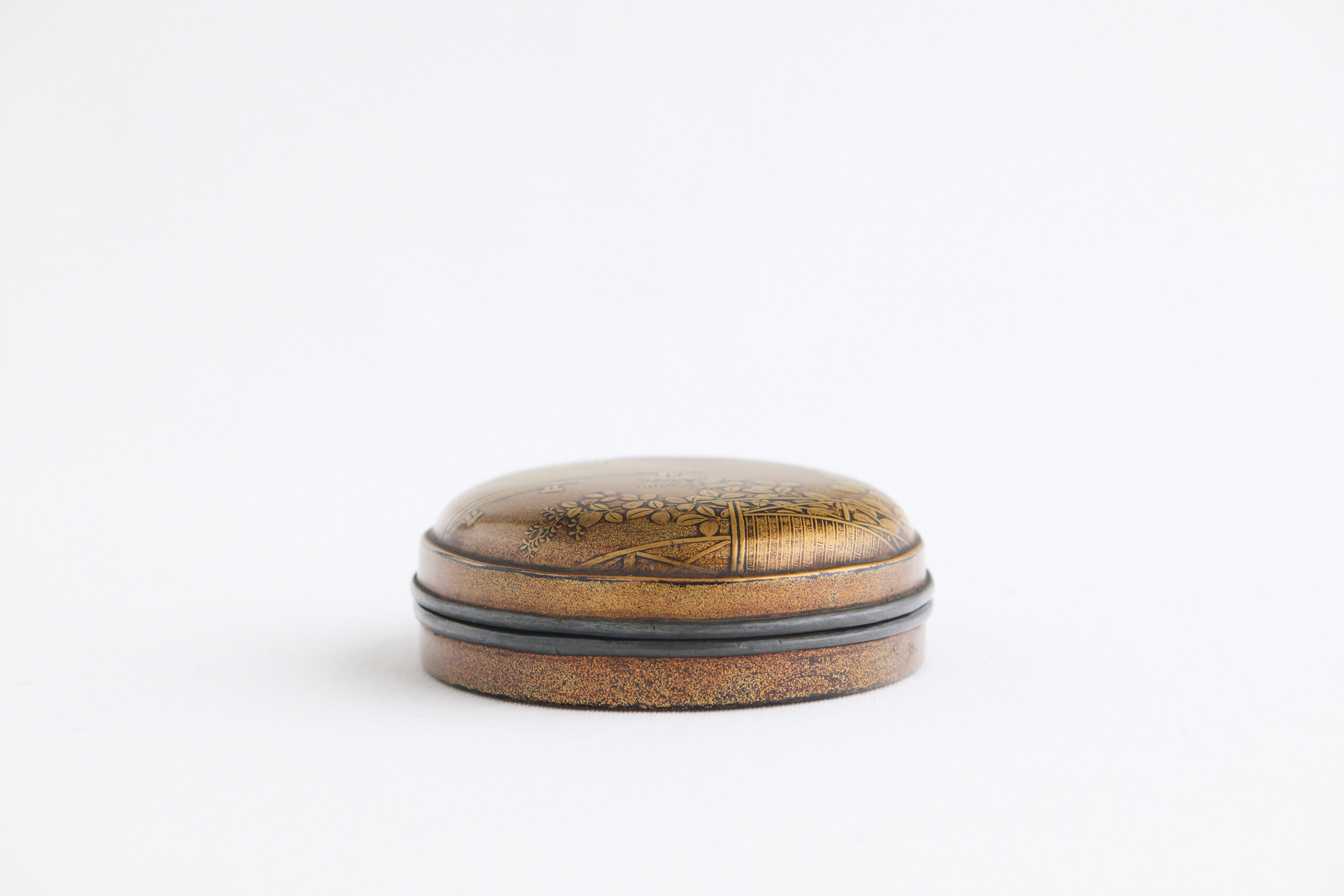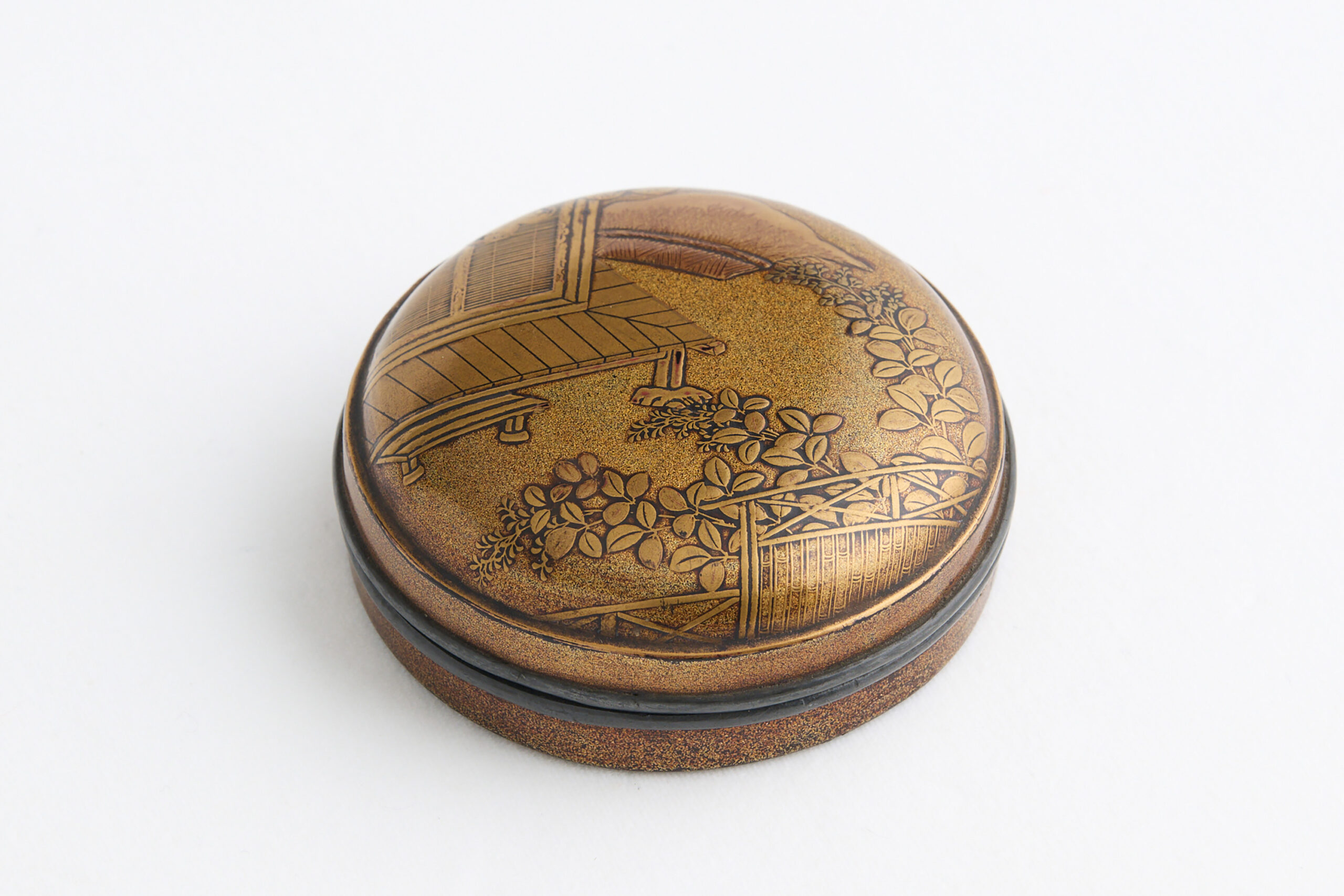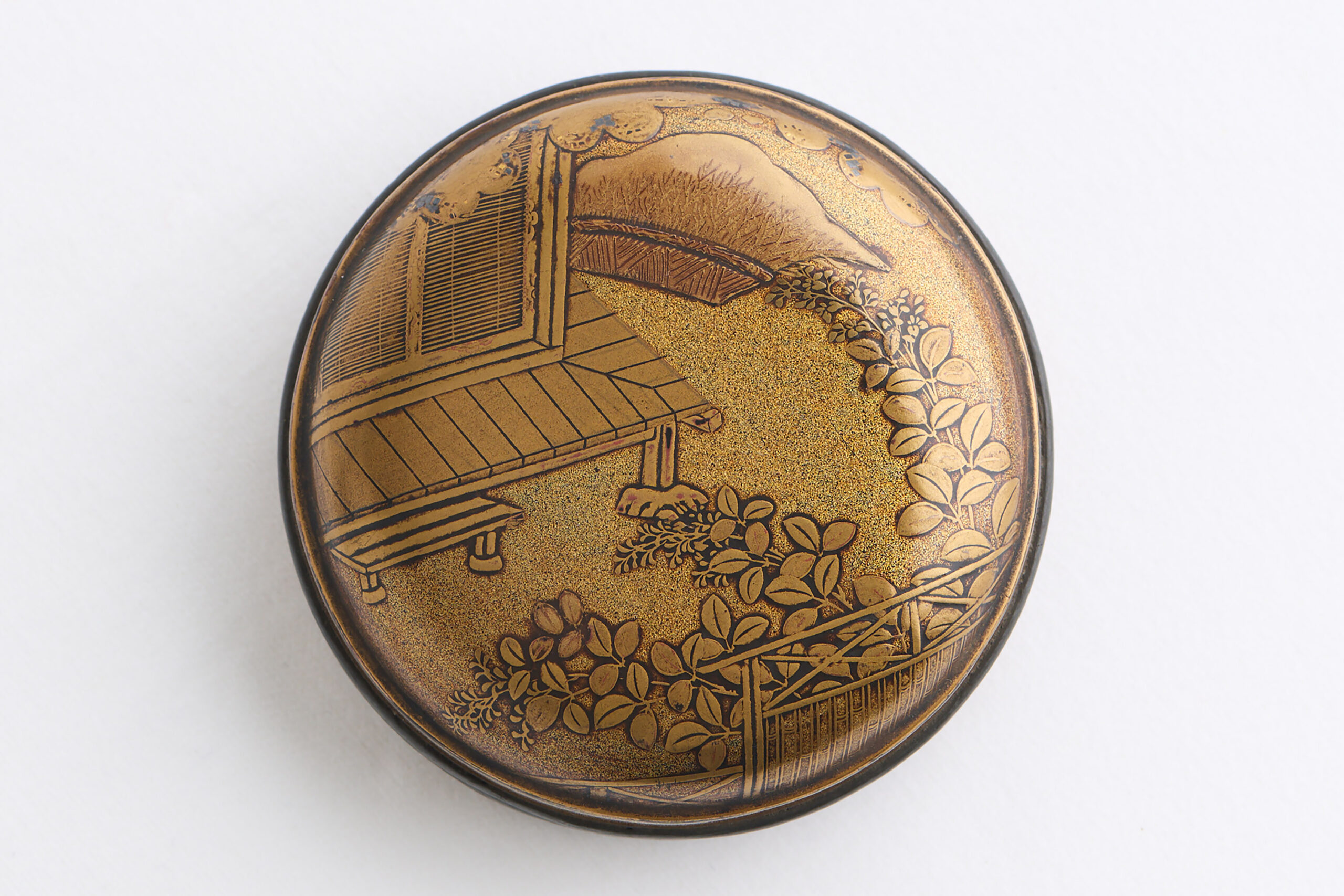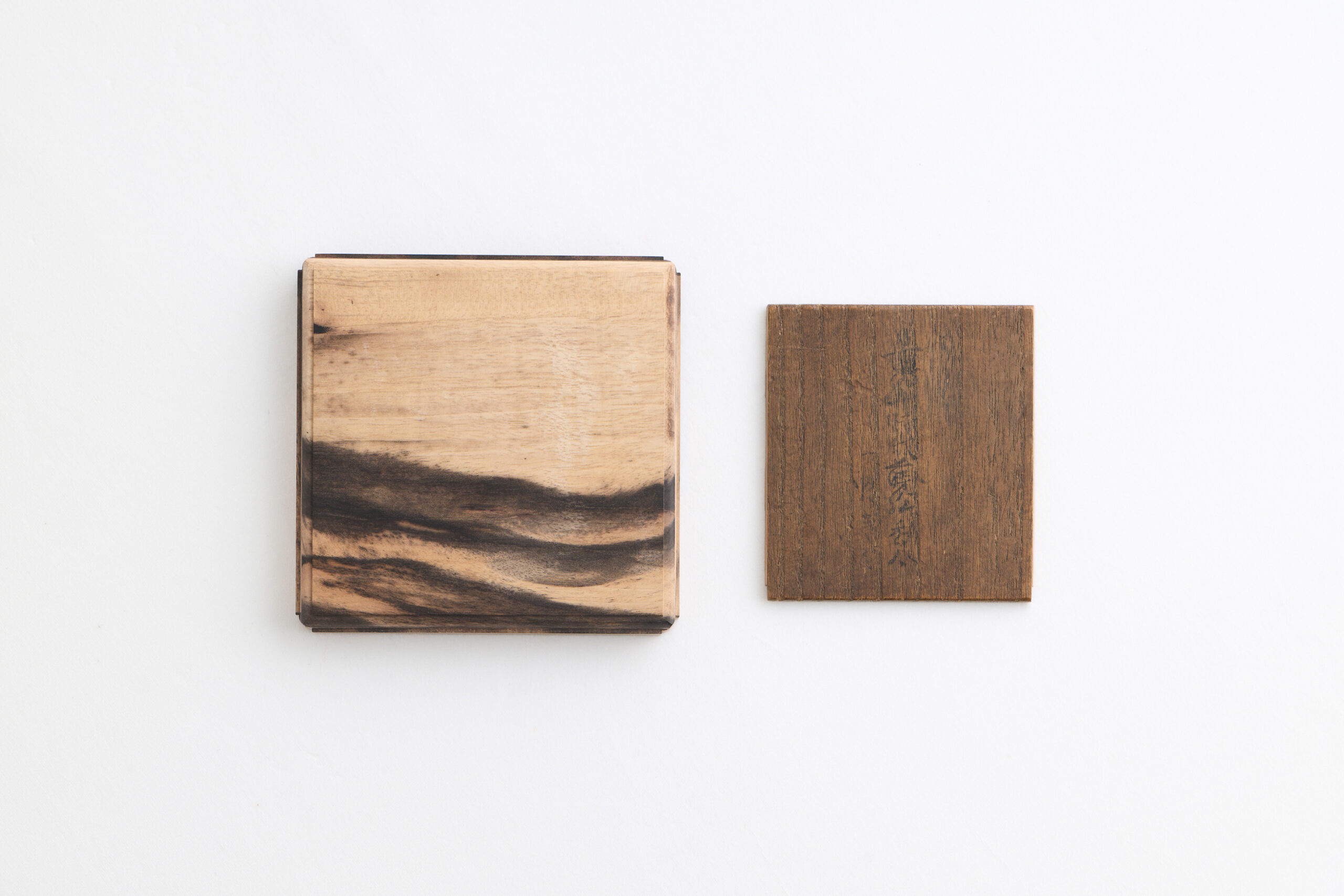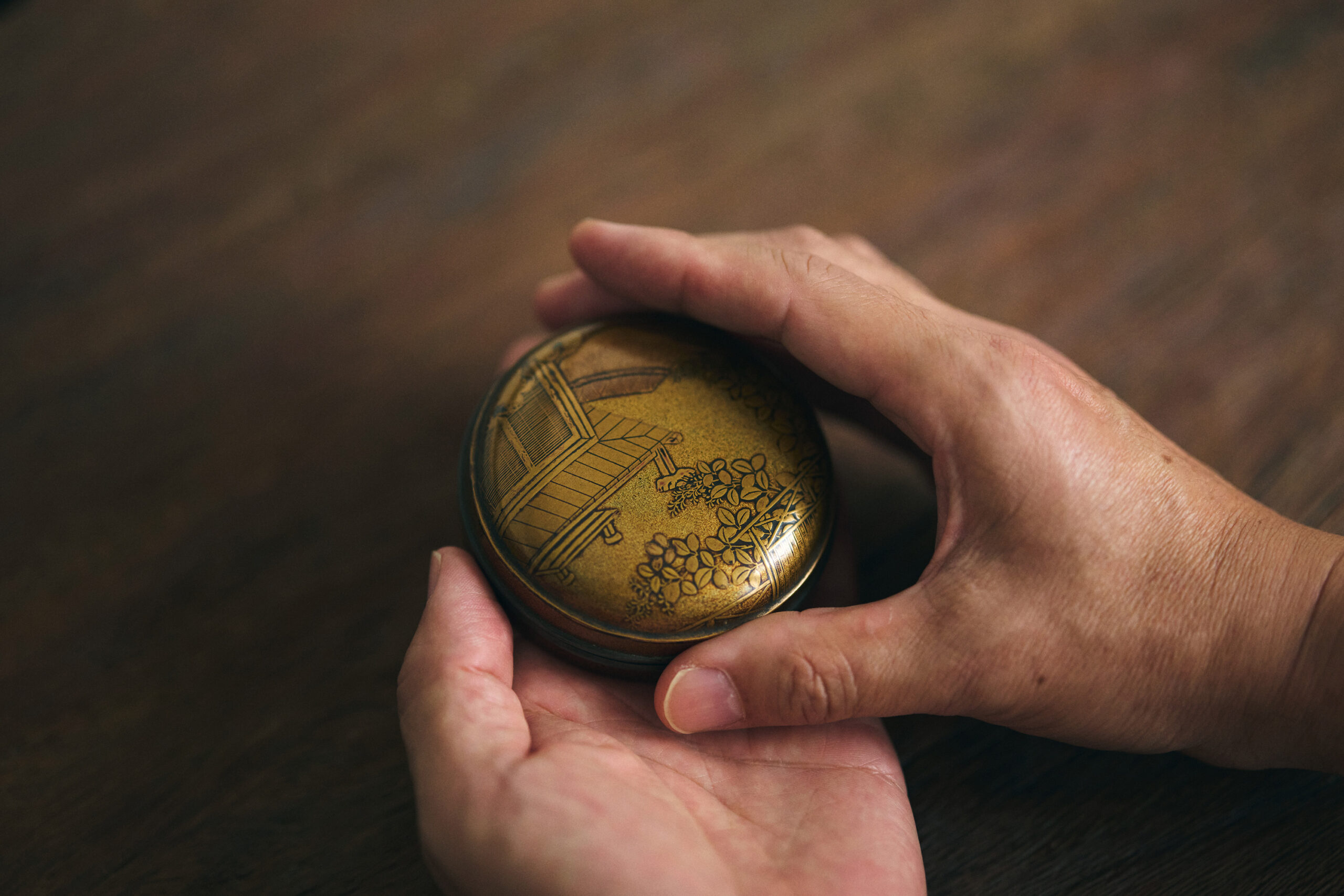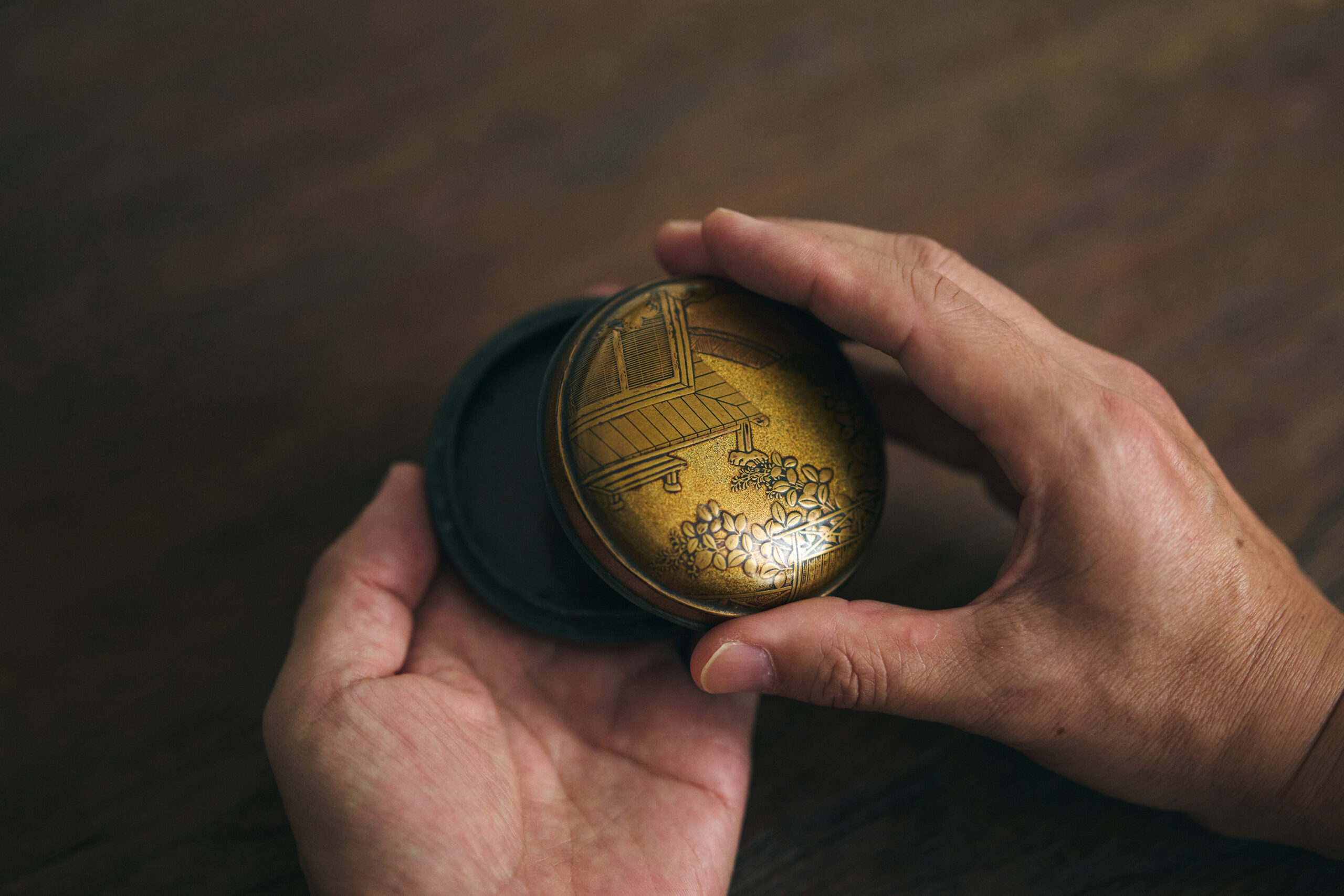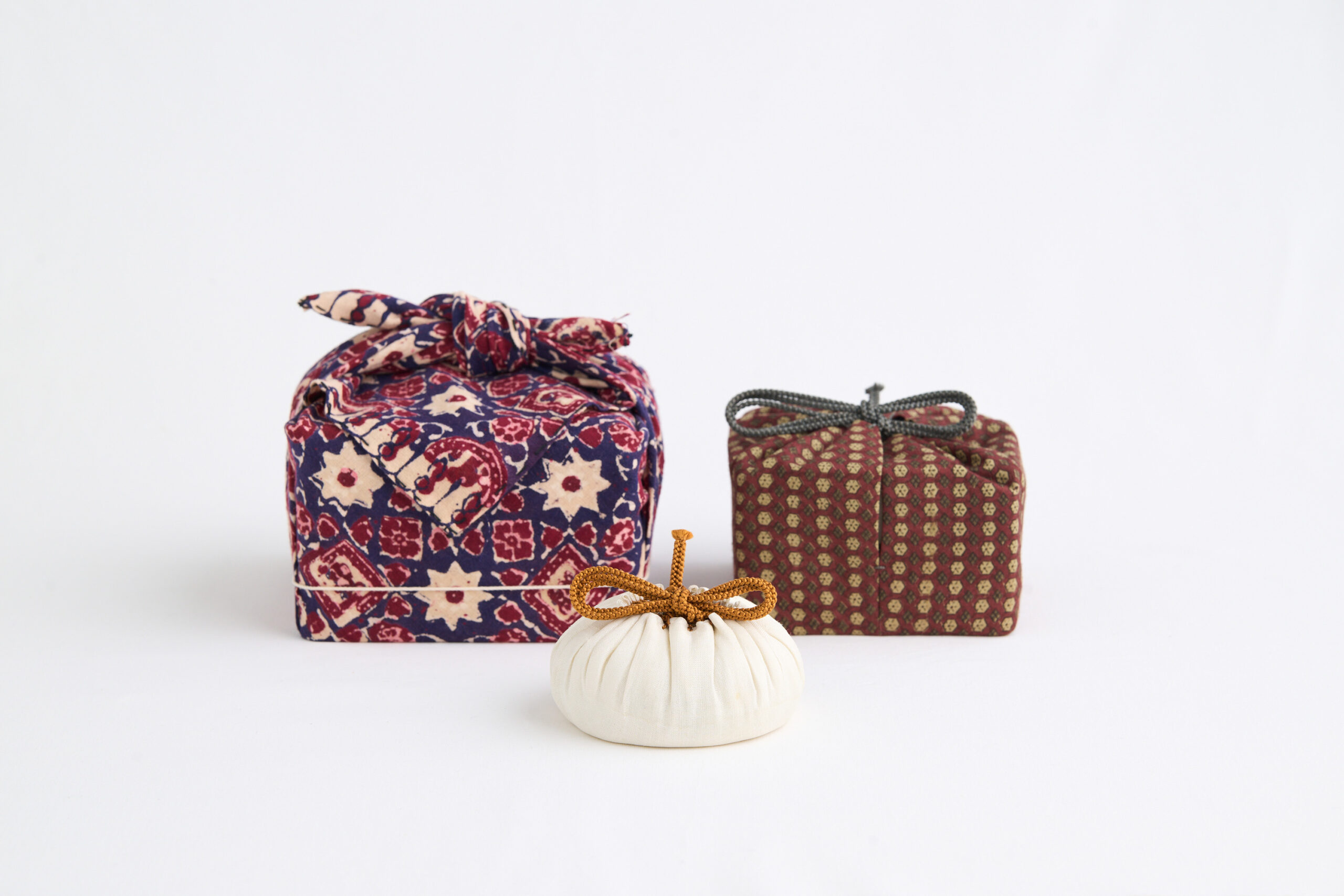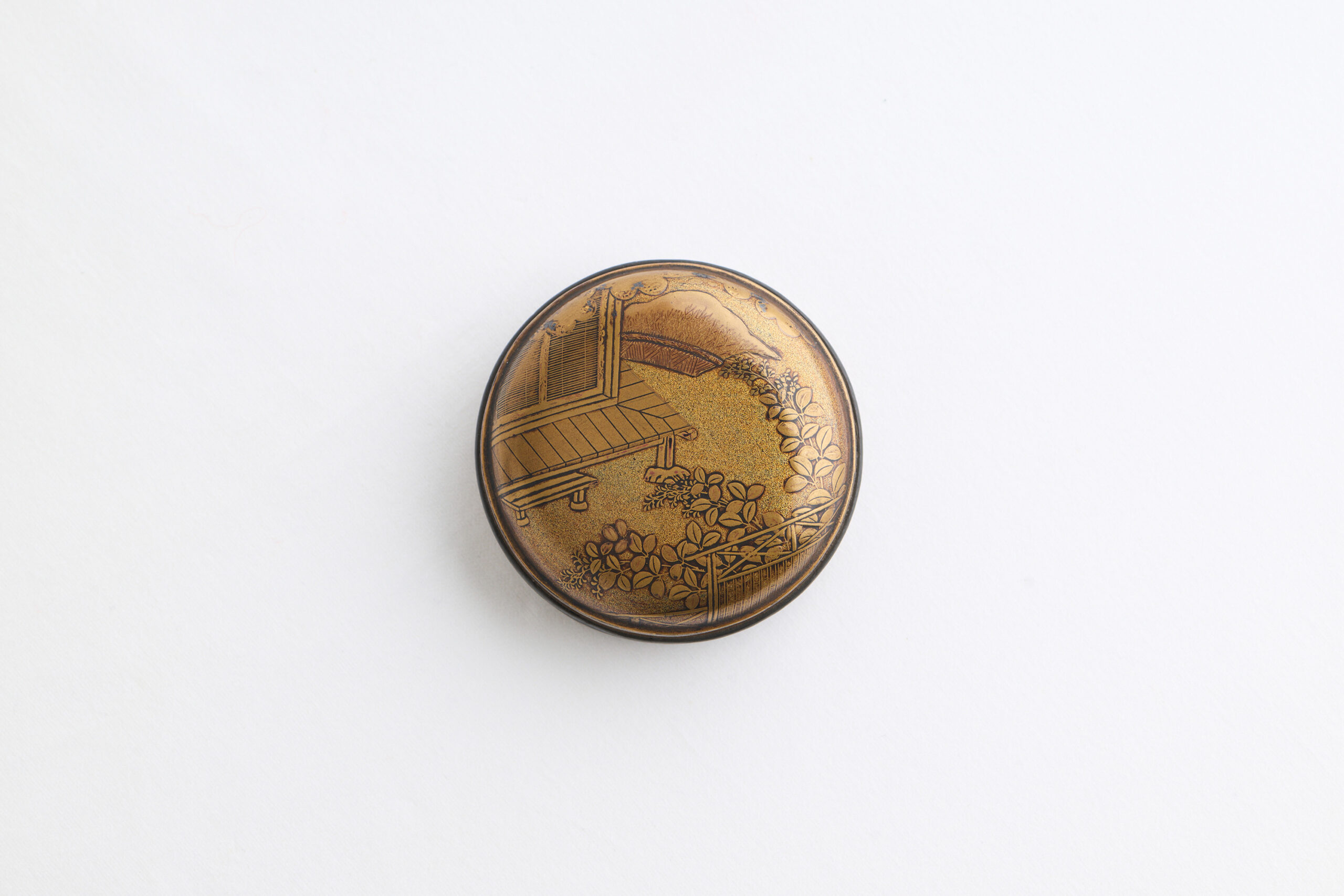
小督局蒔絵錫縁香合
Incense container with "Kogō no Tsubone" Design
JPY600,000Overseas Selling Price
- Period
- Muromachi period (15th century)
- Provenance
- Private collection
- Sizes
- d. 76mm, h. 28mm
- Accessories
- Double wood box, Gomotsu-fukuro, Shifuku for Inner box, Furoshiki
The design on this maki-e tin-rimmed incense container is based on Kogō no Tsubone (*1) from The Tale of the Heike. Tin-rimmed incense containers are small boxes that fit inside cosmetic cases and were custom-made for women of high status. They are said to have been used at tea ceremonies since the Keichō era (small round boxes like this one were used to hold white powder).
The lid, which is typical of the Muromachi period, features a flat lacquer design depicting an unseen Kogō playing the koto. The scene unfolds against a matte background, evoking a very Japanese and tranquil feeling. The body of the incense container is in excellent condition, with no touch-ups or repairs. Even the easily damaged tin joint is original. This is an suberb example of a tin-rimmed lacquer incense container. The atmosphere of the Full Moon Festival has been distilled into this small vessel.
(*1)
Synopsis of Kogō no Tsubone
During the Heian period, when the Taira clan held great power, Kogō no Tsubone was favored by Emperor Takakura. However, fearing the power of Taira no Kiyomori, the father of Emperor Takakura’s wife, she went into hiding in Sagano.
Takakura In (Emperor)grieved morning and night, worrying about Kogō no Tsubone’s whereabouts, but when he heard that Kogō had retired to Sagano, he ordered his subordinate Minamoto no Nakakuni to search for her.
The day happened to be the fifteenth night of the eighth month on the lunar calendar. Believing that Kogō would be drawn by the bright moon on the fifteenth night to play the koto, Nakakuni rode his horse around Sagano, where he heard a koto near Hōrin-ji Temple. The song being played was “Omofu Koi,” a song played in reminiscence. Nakakuni had often played the flute to accompany Kogō’s koto at the Imperial Court and was able to distinguish the tone of her koto, so he was convinced that this was Kogō’s koto and asked to be led to her house.
When Kogō finally met Nakakuni, she had mixed feelings, but after expressing her gratitude to Emperor Takakura for taking the trouble to come looking for her, she entrusted Nakakuni with a letter to be sent to the Emperor, and sent him back to the capital.






